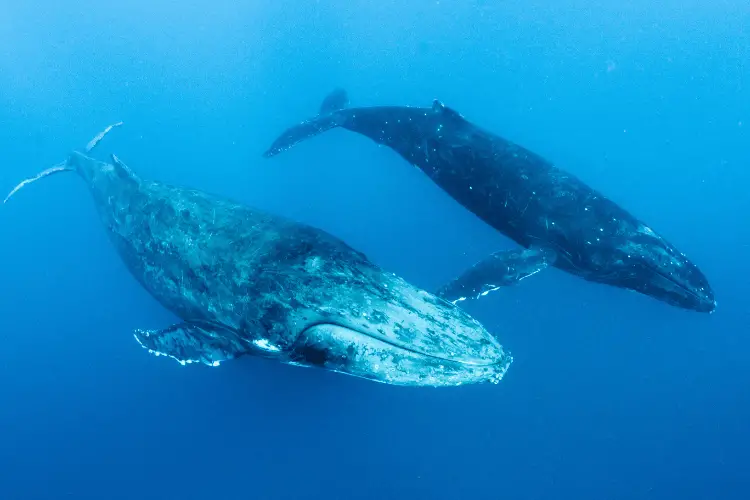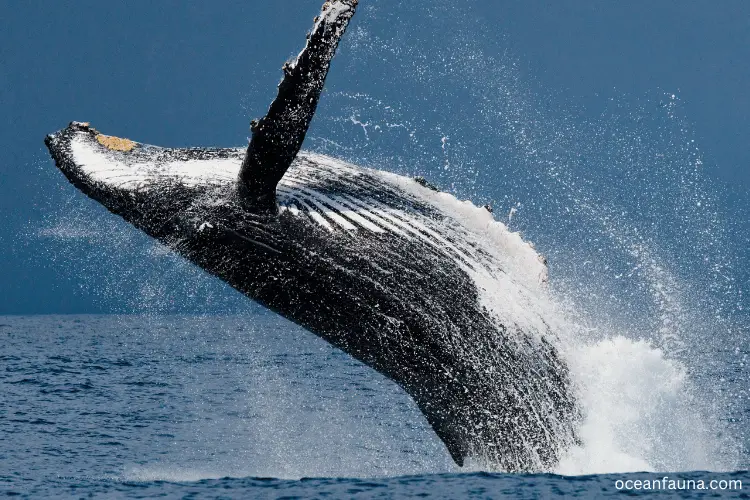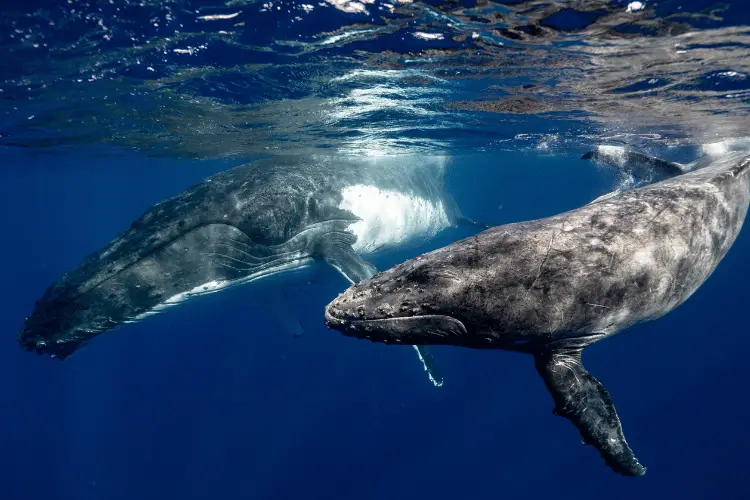Can you tell, “How do whales communicate with each other?” Well, you’re in for a deep dive into the fascinating world of whale communication. These underwater giants have their own language, from squeaks and clicks to low-frequency rumbles.
It’s not just for chit-chat; they use it to make friends, mate, find food, and even navigate the vast ocean. So, get ready to explore the secrets of whale talk in this blog!
How Do Whales Communicate?
Whales communicate with each other through various methods. These methods can be broadly categorized as vocal and tactile communication. Here are the details-
Vocal Communication
Whales produce a variety of vocal sounds for communication, including clicks, whistles, and pulsed calls.
- Clicks: Used for echolocation, these short, high-frequency sounds help whales understand their surroundings and find prey.
- Whistles: Longer and melodic, these vary in pitch and volume. Whales use them to talk within their pods, each having unique whistle patterns.
- Pulsed Calls: These rhythmic, low-frequency sounds are ideal for long-distance communication and socializing.
Tactile Communication
Whales also engage in tactile communication. It involves physical contact between two or more whales. Though not as common as vocal communication, tactile methods are crucial in whale communication.
- Tail Slapping: Whales hit the water surface with their tails, signaling aggression or attracting attention.
- Head Butting: Whales touch heads, a sign of greeting or bonding.
- Rubbing: Whales rub against each other, a playful or bonding action.
How Do Whales Vocalize? [Anatomical Analysis]

You should delve into their anatomy and biology to understand how whales vocalize.
Larynx
Whales have a unique sound-producing system that involves several specialized organs and tissues. Central to this system is the larynx. It’s located at the top of the windpipe but different from ours. Unlike humans, whales use their larynx differently because they lack vocal cords.
The Phonic Lips: The Primary Sound Makers
The main sound-producing organ in whales is the phonic lips, also known as the blowhole or nostril. When air passes through these muscles, they vibrate and create sound waves that travel miles underwater.
Whales typically have two blowholes, except toothed whales, on top of their heads. These are surrounded by a muscular flap called the “dorsal bursa,” which helps control air movement.
The Laryngeal Sac’s Role
Another crucial part of this system is the “laryngeal sac.” It’s a large inflatable pouch at the base of the trachea.
Whales contract throat and chest muscles to push air into the laryngeal sac. This makes it expand quickly and emit clicks, chirps, and whistles.
The shape of the whale’s nasal passages and skull then modifies these sounds, creating different calls.
U-Shaped Fold: The Sound Modifier
Another intriguing part of whale vocalization is the role of the u-shaped fold, also known as the “circular fold.” It’s in the nasal passage before the blowhole and acts like a valve.
It controls airflow direction towards either the lungs or the laryngeal sac. The lungs and sac expand and contract as the whale pushes air through the laryngeal sac. This movement drives air over the u-fold, making it vibrate to produce sound.
5 Main Reasons Why Whales Communicate

Whales communicate with others for several reasons. 5 main reasons are-
Finding Food Sources
Whales communicate to find food sources. Some whales use echolocation to find prey in the ocean’s dark depths. In echolocation, whales send out high-pitched sounds and listen for the echoes. These echoes help whales figure out where their prey is and its size and shape.
Navigating the Waters
Whales navigate complex underwater environments using vocalizations. This helps them find their way when visibility is low due to darkness or murky water.
Establishing Social Connections
Whales communicate to build and keep social connections in their pods. They use various sounds, like unique whistles, to recognize each other.
Seeking out Potential Mates
Male whales sing to attract females during breeding season. These complex songs can last hours. They have different vocalizations and melodies in each whale population.
Warning about Dangers
Whales warn each other about threats. For instance, when a whale spots danger, it makes an exceptional sound. This warns other whales in the pod.
FAQs
How do whales communicate with echolocation?
In echolocation, whales send out high-pitched sounds and listen for the echoes. They learn where their prey is, and its size and shape from the returning echoes. Echolocation is vital for whales to survive. It’s crucial for navigating and hunting in the ocean.
What is it called when whales communicate?
Whales communicate with one another through vocal and tactile communication. They make clicks, whistles, and pulsed calls to communicate vocally. For tactile contact, whales slap tails, butt heads, and rub against each other.
How do whales learn to communicate?
Whales learn to communicate by copying the sounds made by older whales and others in their pod. This process, where whales pass knowledge down generations, is vital to their learning. This way of learning helps whales create complex social groups and behaviors. Also, whales develop a unique sound called a ‘signature whistle.’ They use this to socialize in their pod.
How do humpback whales communicate?
Like other cetaceans, Humpback whales talk to each other using vocal sounds and physical touch. They sing complex songs lasting 30 minutes, mainly during breeding season, to attract mates. For tactile communication, they slap tails and breach, which means jumping out of the water.
How do beluga whales communicate?
Beluga whales communicate using sounds and touch. This helps them socialize and navigate. They make many sounds, like whistles, squeals, chirps, and even bell-like tones.
Can humans understand a whale’s language?
Humans can’t yet understand whale language, but scientists are making significant advances in decoding it. Researchers have found different calls and behaviors whales use to communicate.
For instance, Texas A&M University’s GERG is working with Project CETI. They study sperm whale sounds near Dominica in the Caribbean. Their goal is to better understand these whales and how they communicate.
Conclusion
Hopefully, now you know how whales communicate. They utilize a complex system of vocalizations and tactile behaviors.
Additionally, they also use echolocation to locate food sources. Whales can communicate across vast distances and form intricate social structures by engaging in these activities.

